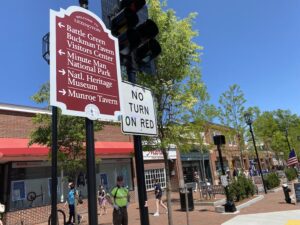Who is a member?
Our members are the local governments of Massachusetts and their elected and appointed leadership.

Multifamily zoning has been added to a dozen areas of Lexington, including its downtown.
Following an April Town Meeting vote approving 12 new overlay districts accounting for 227 acres of multifamily zoning, Lexington is on track to complete its MBTA communities zoning submission to the state a year and a half ahead of schedule.
The town is seeking to comply with a new section of the Zoning Act, enacted in 2021, that requires 177 MBTA communities to approve multifamily zoning near public transit, for at least 15 units an acre. Lexington can now submit its district compliance application for state review.
The town far exceeded the roughly 80 acres it needed under the new law. Town officials and housing advocates said they sought to seize the opportunity to confront a mounting housing crisis and help people who are increasingly being priced out of the region’s housing market. (The median single-family home now costs $1.7 million in Lexington.) The proposal faced opposition from some in the representative Town Meeting — and two unsuccessful amendments to limit its scope — but passed by a wide margin, 107-63.
“This is a major step to open up Lexington to more folks to be here,” said former Housing and Economic Development Secretary Mike Kennealy, a Lexington resident, during Town Meeting. “We are early in this process, let’s be candid about it. There are 177 MBTA communities. This is a chance for Lexington to lead, and isn’t that what we want to do? Be out there early and show what’s possible.”
The law required MBTA communities to submit initial action plans by Jan. 31. Zoning compliance must be accomplished by the end of 2023, 2024 or 2025, depending on the community’s level of MBTA service. Lexington must comply by Dec. 31, 2024. The law requires that the communities zone for the housing units, but doesn’t require them to be built.
The MBTA communities law has prompted concerns from some municipalities about preemption of local control over zoning, as well as whether the requirements will actually result in additional affordable housing units being built. Failure to comply, however, would jeopardize communities’ access to some funding programs, and, according to a March advisory from Attorney General Andrea Campbell, could result in legal repercussions.
“We are incredibly proud that 98% of MBTA communities have achieved interim compliance with the law and are actively working on new or enhanced multifamily zoning districts to remove barriers to transit-oriented development,” the Executive Office of Housing and Livable Communities said in a statement to the MMA.
The office urged MBTA communities to seek funding from Community One Stop for Growth programs to help with their efforts in developing compliant zoning.
Lexington’s new zoning allows for multifamily housing to be built by right, subject to site plan review, within three types of overlay districts allowing for different building heights and uses. If developers include first-floor commercial or retail spaces, they can construct taller buildings. Projects with eight or more units must have 15% inclusionary housing for income-limited households.
“There are a number of factors we can’t control,” said Planning Board Chair Robert Peters, “but I think by providing the opportunity for more housing options, then we can at least have some economic diversity in town and housing stock that better meets the needs of all members of the community.”
Lexington officials said the MBTA communities process aligned with housing work the community had already been doing, including a recent update to its comprehensive plan and the creation of an affordable housing trust and a nonprofit housing corporation. The Planning Board initially intended to bring an MBTA communities-related article to last year’s Town Meeting, but withdrew it to spend more time on the zoning.
“We had all of this housing wind in our sails, so to speak,” said Carol Kowalski, Lexington’s assistant town manager for development.
The Planning Board held 26 public meetings over the course of a year to discuss the zoning changes. In October, the town held a housing workshop, during which residents suggested possible locations for multifamily zoning near bus service, shops and services, and a bike path. The Planning Board narrowed down the suggestions, which led to the 12 districts covering 279 properties, according to Planning Director Abby McCabe.
Some residents initially struggled to envision the zoning without having tangible building projects to reference, McCabe said.
“That was definitely the challenge,” she said. “It felt like no matter how many times we explained it, people were asking for very specific details — what are the buildings going to look like, how many new units, how many bedrooms?”
Outreach by local legislators and housing advocates to Town Meeting members helped the effort.
Lexington is waiting on a review of its bylaw by the Attorney General’s Office, and is working on the district compliance application. Over the summer, the town will finalize details for the application and site review process for the new overlay districts, McCabe said, and Lexington hopes to be ready to accept applications by Labor Day.
Officials said this change wouldn’t have been possible without another provision of the “Housing Choice” legislation that created the MBTA communities zoning — the lowering of the threshold to approve certain zoning changes from a two-thirds majority to a simple majority vote. (The town’s zoning change won 63% of the vote.)
“If Housing Choice hadn’t passed,” Peters said, “we would be having a very different conversation.”